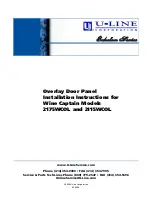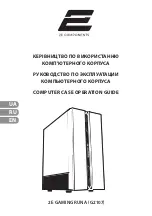
Wavez Kymera User’s Manual v
1.7.20181211
Page 17
Never operate your Kymera at unsafe distances from swimmers, surfers or other water users
Never operate your Kymera in very bad weather or very rough conditions
Never overload your board by exceeding the weight limit or carrying multiple passengers
1.
Verify both the front and rear hatches are secured and place the board in the water.
2.
Once in knee to waist deep water, press up and down on the tail of the board repeatedly, which will push water through the jet assembly,
clearing any sand or debris that may have entered.
Dunking is a critical step to prevent scoring the inside of the pump housing, damaging the jet assembly and/or the impeller and reducing
performance.
Never allow any debris to enter the jet assembly!
3.
Once dunked, with both hatches secured, verify your lifejacket is secured and you are free to board from either side or the rear.
4.
Lie down on the board and position yourself into the centre. The knee pockets at the rear will help with proper placement. The handles
can be used to adjust your position but be mindful of the throttle trigger located on the right handle is not inadvertently activated.
5.
Straighten your arms to ensure your body weight is at the back of the board, or the nose will dive as soon as you begin to move away
from shore.
6.
Once comfortable, check your surroundings for other water users before gently pull the throttle located on the right handle and the
board will begin to move forward.
Check the water outlets on both the right and left side of the board to verify cooling water flow. A small stream of water on either side
should be visible coming from small silver fittings on the board.
7.
Increase speed by squeezing harder on the throttle trigger.
During the first hours of operation it is critical to allow all components to properly wear in. This is accomplished by simply taking care to
run the board through its full RPM range repeatedly to full power, avoiding prolonged full power operation more than a few minutes at a
time for the first 2-3 charge cycles. Peak efficiency is typically achieved after 5-6 cycles.
Ride
Adult supervision is required! Never allow under-age riders to operate your Kymera!
Be mindful of your surroundings including other water users, swimmers, boats, water depth, hazards and distance to shore.
Kymera should never be operated further from shore than your physical ability to paddle or swim unless a support vessel or lifeguard is
present. Always keep the shore visible.
When travelling at 10 knots (18km/h) or more, keep 60 metres from any person in the water (including a surfer or boogie boarder), sailing
vessel or passive craft
When travelling at 10 knots (18km/h) or more, keep 30 metres from another power driven vessel, the shore, any moored/anchored
vessel, or any structure or object
Never surf big waves with your Kymera (32kg of Kymera tumbling through the waves is a bad idea for you, other water users and your
expensive watercraft!)
1.
Start riding with your arms straight, then shift your body weight forward when you begin to plane.
2.
Steering the board is achieved with a combination of shifting the lower half of your body weight left and right, foot placement (acting as
rudders) and hand placement (acting as water brakes).












































